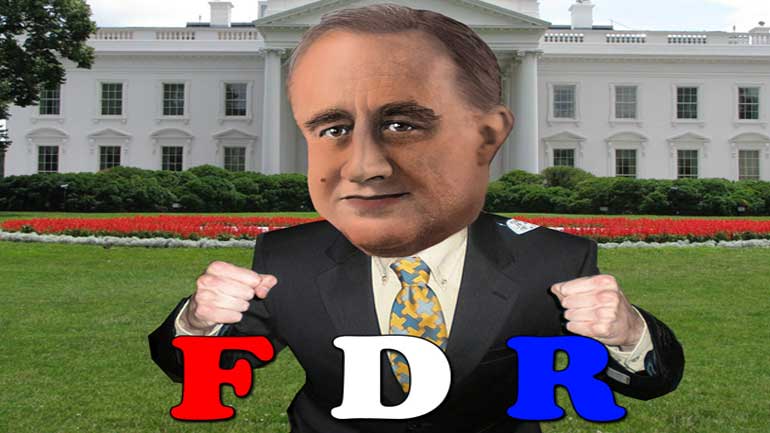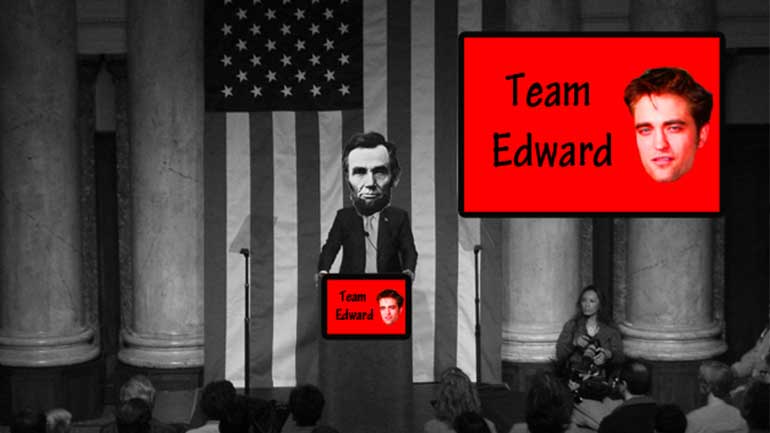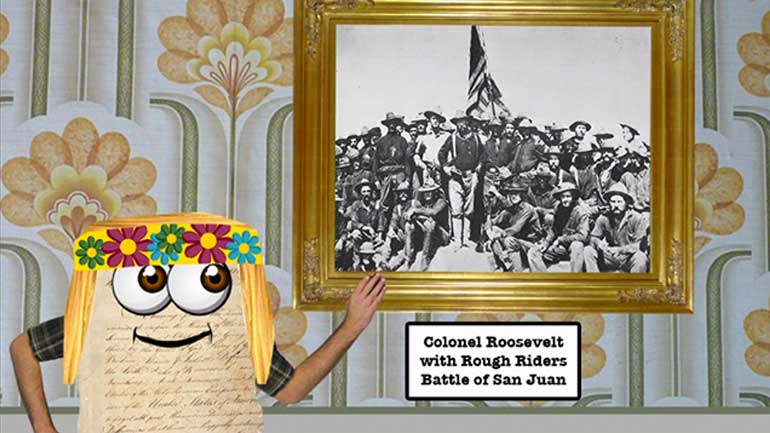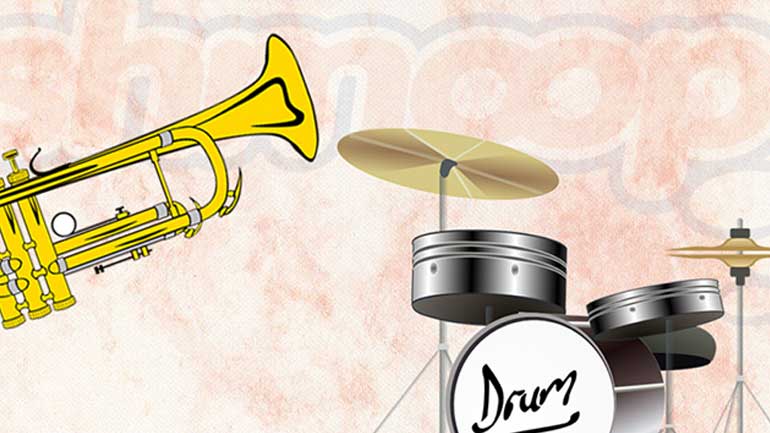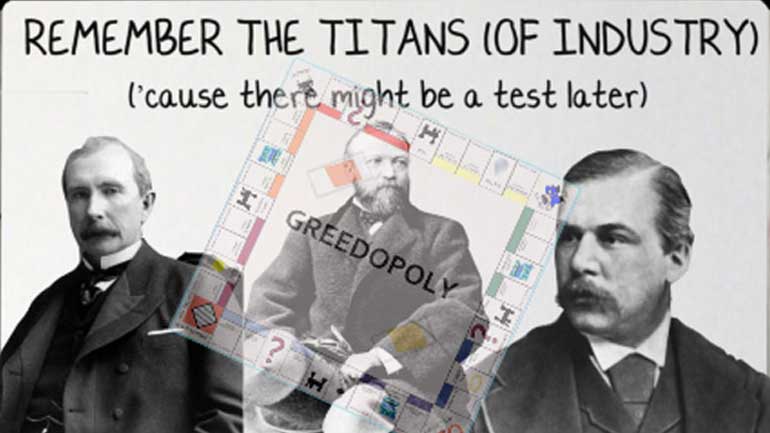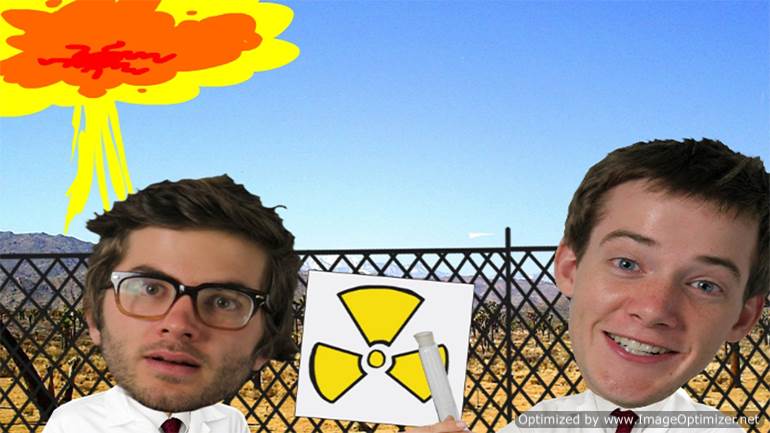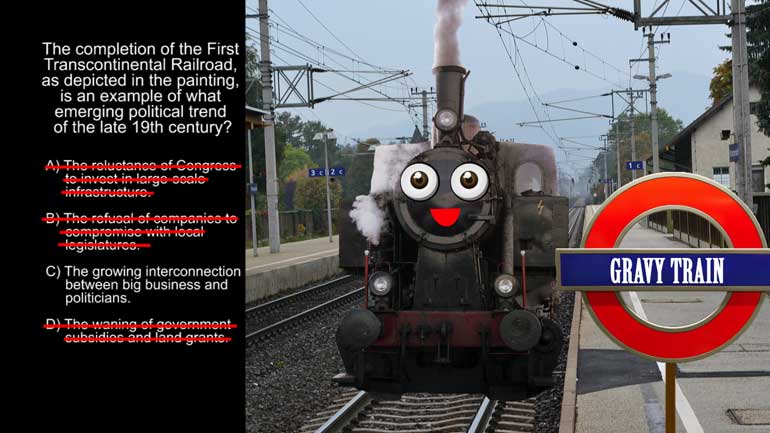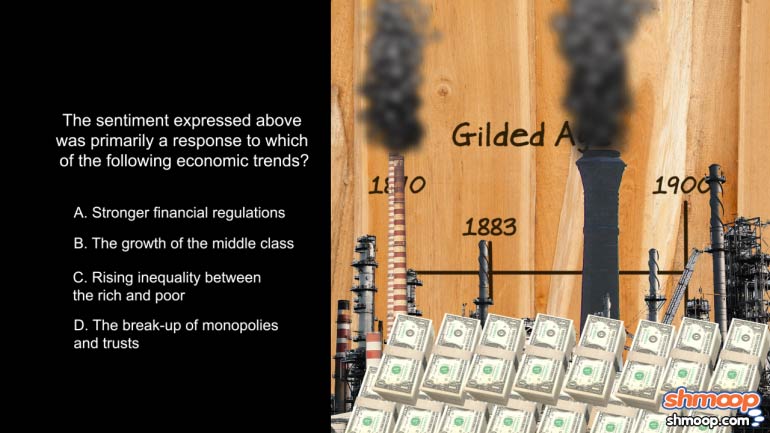ShmoopTube
Where Monty Python meets your 10th grade teacher.
Search Thousands of Shmoop Videos
U.S. History EOC Assessment Videos 64 videos
AP U.S. History 1.1 Period 5: 1848-1877. Which of the following groups would be most likely to support the idea of Manifest Destiny?
In the 1950s and 60s, people weren't just expressing their feelings toward the government—they were singing them, too. (Think Crosby, Stills, Nas...
Deal or no deal? FDR's New Deal provided hundreds of thousands of jobs in the public sector to bring the economy out of the Great Depression. It wa...
AP U.S. History 2.2 Period 6: 1865-1898 230 Views
Share It!
Description:
AP U.S. History 2.2 Period 6: 1865-1898. In this AP U.S. History question determine why the structures of companies in industries like steel began to change in the late 19th century.
Transcript
- 00:00
[ musical flourish ]
- 00:03
And here's your Shmoop du jour, brought to you by vertical integration,
- 00:07
the ultimate solution for ending size and shape discrimination.
- 00:11
During this time, the structure of companies and industries
- 00:13
like steel changed because companies... what?
Full Transcript
- 00:17
And here are your potential answers.
- 00:19
[ screaming ]
- 00:22
We know during this time that steel and oil companies were run
- 00:25
by people with a thirst for profit.
- 00:27
These men turned their sights on making their companies
- 00:30
as big and powerful as possible,
- 00:32
all in the interest of earning more of that sweet, sweet green.
- 00:34
Let's see which answer best describes how the industrialists
- 00:37
could alter those companies to line their pockets
- 00:40
with even more dough.
- 00:41
Did the structure of big companies change because they
- 00:44
B - began to outsource their distribution networks?
- 00:47
Well, if you wanted more control over your company,
- 00:49
you probably wouldn't outsource parts of the process to other people.
- 00:52
Was the structure of these industries changing because they
- 00:55
C - lost their monopolies? Well, actually,
- 00:57
their monopolies were stronger than ever.
- 00:59
By consolidating their business and focusing even more ruthlessly
- 01:02
on the bottom line, companies became so
- 01:04
powerful that they didn't even have to rely on Congress for favors.
- 01:07
So that knocks out C and D.
- 01:09
Which means that these companies were changing because they
- 01:13
A - came to control all steps of the production process.
- 01:16
Remember the term "vertical integration"?
- 01:18
That's when a company comes to control every step of the production process
- 01:21
from harvesting the raw materials all the way
- 01:24
up to selling the final product.
- 01:25
And it eliminates the ineffiency of having a middle man
- 01:28
so these big companies consolidated
- 01:30
all the business under one roof,
- 01:32
driving profits even higher.
- 01:34
So A is the correct answer. Looks like the industrialist
- 01:36
top-down approach was, well, from the top down.
- 01:40
[ angelic harmony ]
Related Videos
AP U.S. History Exam 2.45. The journey shown on the map was an example of...what?
AP U.S. History Exam 2.26. This speech reinforced a shift in the focus of the war that Lincoln established by...what?
What did the Spanish messengers bring with them to North America? Hint: you probably wouldn't be thrilled to get this for your next birthday.
AP U.S. History Diagnostic 24. How did the United States choose containment over the National Security Council Report in Latin America?
AP U.S. History Exam 2.25. In writing the Gettysburg Address, Lincoln was still working to win over Northern voters who believed that...what?


